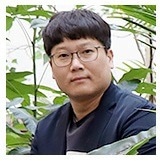A research group at Pohang University of Science & Technology (POSTECH) has been successful in controlling “trions,” a discovery toward developing what could eventually be revolutionary optical communication technology.

Professor Kyoung-Duck Park. Image Credit: Pohang University of Science & Technology (POSTECH)
The group of researchers headed by Professor Kyoung-Duck Park and Ph.D. candidate Hyeongwoo Lee in the Department of Physics at POSTECH has been successful in producing high-purity trions by utilizing a nanoscale plasmonic waveguide and regulating the location at which the particles were made.
Excitons are developed when light is focused on the semiconductor material. The exciton, known to be a binding of an electron and a hole, is electrically neutral. The addition of one more electron to an exciton creates a trion.
Although both particles are utilized to make next-generation optical communications devices and solar cells, trions provide more benefits over excitons. They are considered to be better for practical device applications as it is possible to control with an electric field and consists of weaker binding energy.
The team made use of a “nanoscale plasmonic waveguide” with a gap width of nearly 200 nm (10 to 9 m) to make trions. The waveguide helps alter light into “plasmons,” a phenomenon of collective electron oscillations. Also, it strongly limits plasmons in a space that is smaller compared to the wavelength of light to transport them to the preferred location.
When a two-dimensional semiconductor material has been moved onto the waveguide, the material is stretched up ahead of the groove on the waveguide. Centering light onto the 2D material will develop excitons in the semiconductor, and they also flow to the center of the waveguide just like water poured via a funnel.
The plasmons’ high energy aids in the transportation of the electrons in the metal part of the waveguide toward the semiconductor. Further, the transported electrons move toward the center of the waveguide to bond with excitons, eventually making trions.
The team was successful in controlling the location where trions are made by spatially regulated plasmons with the combination of nano optics and adaptive optics. With the availability of this technology, it was possible for the scientists to produce both trions and plasmons at the preferred location on the plasmonic waveguide.
This study is important in that “light” was employed in place of “electricity”. The passage that light shifts along helped in determining a solution to the development of optical devices.
Also, it is significant that the research brought together various disciplines: “excitonics,” which studies particles like excitons, and “plasmonics,” which explores plasmons. When experiencing the limits, one tends to determine a solution inside the field. However, the team thought creatively to determine a solution depending on the convergence of various disciplines.
The research findings are anticipated to greatly add up to the effective control of trion-based optical devices and the development of highly-efficient devices for optically transforming energy.
I think the research defined a new physical concept that can create and control trions in nanoscale spaces. Based on the research outcome, I am sketching out research on a wide area information and communication technology with semiconductor particles.
Hyeongwoo Lee, Study First Author, Pohang University of Science & Technology
The plasmonic waveguide was invented by a team headed by Hyuck Choo, Executive Vice President of Samsung Electronics; the pre-analysis of the samples was performed by a team guided by Professor Hong Seok Lee and Professor Sangmin An of Jeonbuk National University; the materials utilized in the experiment were made by a team led by Professor Ki Kang Kim of Sungkyunkwan University; and measurements were conducted collaboratively with Yeonjeong Koo, Huitae Joo, and Mingu Kang of the Department of Physics at POSTECH.
The study was financially supported by the National Research Foundation of Korea, the Ministry of Science and ICT, and the Samsung Science and Technology Foundation.
Journal Reference
Lee, H., et al. (2023) All-optical control of high-purity trions in nanoscale waveguide. Nature Communications. https://doi.org/10.1038/s41467-023-37481-1